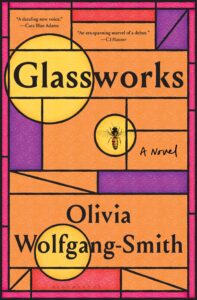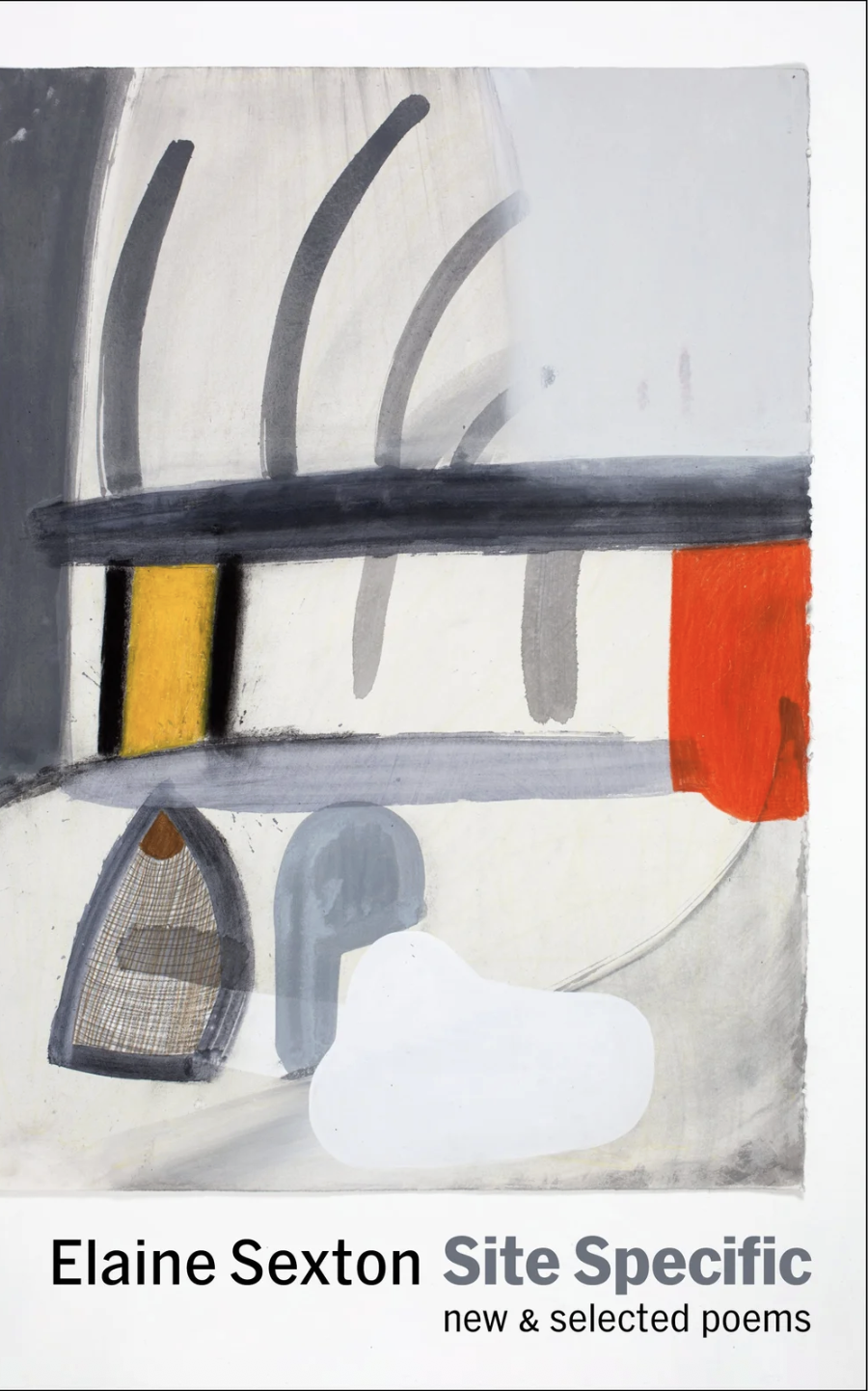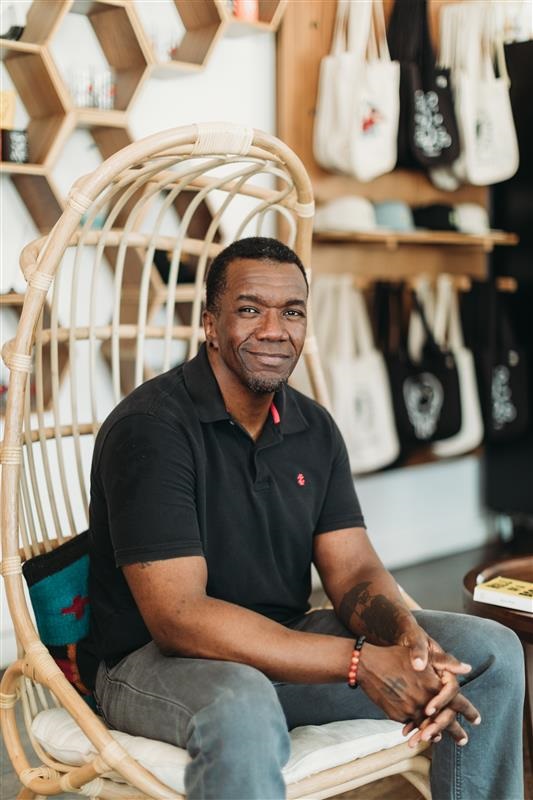Olivia Wolfgang-Smith’s debut novel Glassworks (Bloomsbury Publishing, May 2023) follows one family through four generations. The story begins in 1910 with the wealthy young philanthropist Agnes Carter, and then follows her descendants, both in blood and in spirit, up until the present time. Each person’s story builds on those that came before it, creating a portrait that is funny at times, sad at others, but always compassionate.
Before publishing the novel, Wolfgang-Smith’s work appeared in a number of journals including Salamander, Ninth Letter, and the Common. Her work has been longlisted for Glimmer Train’s Short Story Award for New Writers and DIAGRAM’s Innovative Fiction Contest. Originally from Rhode Island, she now lives in Brooklyn.
I was lucky enough to talk with her over the phone about the novel, about “scrappy dames” and “tender gents,” and about how it’s hard to list your influences without feeling a bit of imposter syndrome.
***
The Rumpus: The book is divided into four different sections, each focusing on a new main character. Can you talk a bit about how you arrived at that structure?
Olivia Wolfgang-Smith: I think that the structure arrived at me. The spark for what eventually became Glassworks was a coincidence of me learning about Leopold and Rudolf Blaschka, who were a father and son team of Czech glass artisans in the late 19th and early 20th centuries. They made the real-life glass flowers for Harvard that are the inspiration for the first section of the book. I was blown away by their work and also by the way that they created it—they were a creative and professional team who were also parent and child, and the way that Leopold, the father, spoke about that relationship and that legacy. A quote from him is the epigraph of the book.
Very shortly after I discovered the Blaschkas, by total coincidence, I learned about the modern art and business of keepsake ornaments, the glass objects that incorporate a loved one’s cremains, which is the focus of the book’s fourth section, and is a very real industry in the real world. So, to be struck twice in such quick succession by such differently amazing ways of working with glass—one that felt very historical, and then one that felt very modern, and for both of them to be so tied to family and grief and the complexity of human feeling—it felt inevitable that I had to write something that connected those two things.
For a while, the project was a braided narrative of those two sections, the 1910 and the modern day, with characters who were connected by these threads that they didn’t really have enough information to understand. In that sense, this is a book about miscommunication. Each section feels siloed to the characters within, but from the reader’s point of view, it’s part of a cohesive whole that’s been baked in from the beginning.
In those early drafting stages, it was very unpremeditated that I would then connect those two points, thinking, “How do we get from point A to point B?” or “Who are the middle legs of this family relay?” The 1980s section came next and then last, the 1930s section. That’s when I felt like the chain was complete. I suppose I could have kept going forward and back in this way forever.
Rumpus: A glass bee sculpture appears in each section of the novel, handed down from one character to another. How is the idea of inheritance important in this story, both in terms of this tiny bee and the larger themes of the book?
Wolfgang-Smith: Yes. Each generation here has certain things that they’re passing down with great fanfare and ceremony, and then other things that they are taking great pains to conceal. Then there are still other things that they might like to pass down, but instead, end up sacrificing to a silence or a secrecy that feels more important—whether that’s money, or heirlooms, or resentment, or some sense of understanding or context.
There are things in this book that accumulate from generation to generation, and then there are others that erode over time. I think I was interested in both processes and then also the poignancy of the fact that they can happen at the same time between the same people or objects. The bee is at the center of that.
It’s gaining value in more ways than one. It’s gaining sentimental value and monetary value with each generation, but it’s also getting progressively more damaged. Of course, it’s losing its original context, and also gathering new context as it goes.
Rumpus: One thing that occurred to me when I was reading is there’s definitely—I don’t want to say inheritance of abuse—but that it seems a lot of the characters have to survive some domestic trauma, and that that trauma gets passed down to a certain extent.
Wolfgang-Smith: I think that there is some of that—either inherited trauma or inherited instinctive response to that thing. Then some of the inheritance is more indirect, which is also something I was interested in. What we’re aware of being passed down directly to us and what comes in sideways.
Rumpus: Glassworks centers around a biological family for the first three sections, and then begins to branch out to other characters. What ideas did this branching out allow you to explore?
Wolfgang-Smith: This is a really great question. I wanted this book to have an extensive definition of family, so I wanted to move beyond literal, genetic ancestry, certainly, but also beyond the conventional, traditional family structure. It’s a novel that follows a family over the course of a century. I wanted the book’s definition of family to be honest and encompassing enough to explore how people who don’t formally raise children as romantic partners still have profound cascading effects, both positive and negative, on their communities that can last generations.
I also wanted to show an extensive portrait of queer love and support, but also the fact that “chosen family” can wound one another as severely as blood relatives can. I do hope that the themes are present in the book’s early sections too. Not every character in Glassworks, especially in the early sections, has the vocabulary and the context to be self-aware about this, but they’re all negotiating their gender identities and their sexual identities, and taking big risks to redefine what family means for them, starting with Agnes, who takes inspiration from this ancestral queer relationship and trying to figure out what she wants.
Rumpus: The novel uses an alternating third-person point of view. How did you arrive at that for the book?
Wolfgang-Smith: I think that each character sees themselves as the protagonist of the book, and they are to a certain extent, in the sense that they’re each driving the bus of their individual section, and they’re the main character of reality from their perspective. Then they each fade into the background for the next section when the narrative baton is handed off to someone else.
Alternating third person felt like the right fit for this kind of writing, for this relay race of subjectivity, while maintaining a consistent distance for the reader to have the full picture. If I’ve done my job right, no one character takes precedence. I have to be candid with you—at no point was I writing this in first person and then thought, “Wait, wait a minute, third is more appropriate for this project.”
Rumpus: In the third section of the book, we meet the character Cecily, and over the course of that section, we discover she has intentionally taken on that name to hide her identity. Similarly, in the fourth section, we meet a character named Flip, who very much wants to find out the meaning of her given name. How is the trope of names and naming working in your book?
Wolfgang-Smith: This is a book about both legacy and identity, so I think that it’s inevitable that the characters are concerned with either honoring their names, changing their names, asserting their names. I was interested in the different ways that first versus last names are important when you’re making a statement about your own individual identity versus a statement about what family you belong to, when a given character decides on their own name versus when someone else decides for them.
Names interact with every facet of experience. There’s marriage, there’s gender identity, there’s power and philanthropy through those institutions that are dedicated in Agnes’ maiden name, which then haunt the rest of the book. There’s cultural identity through Agnes’s anglicized name. There’s creativity and occupations. Cecily’s stage name is usurping her given and family names. Flip is named in Novak’s honor—she has to continuously navigate her mother’s regret over that decision, and then is renamed or re-nicknamed by her sister.
This is much quieter, but all throughout Edward’s point of view section, the book refers to him as Edward, but other characters almost exclusively refer to him as Ed. That’s something that looms large in my head when I look at that section, but naming and nicknaming can just feel, I think, too simple to remark on, at least outside of the red tape bureaucracy of a legal name change, but there’s nothing closer to the bone. It’s one of the most intimate ways that we interact with the world and with ourselves. It felt, especially for this book, inevitable that names would be something the characters would be focused on.
Rumpus: What was your publishing journey like for this book?
Wolfgang-Smith: It took some time to find a home. It has a unique structure and in our first round of submissions, there were lots of folks who responded to one or another section, interestingly, always a different one from before, more than the others but didn’t have an editorial vision for the whole thing ringing together. Working with Grace McNamee at Bloomsbury ended up being really a dream come true. She saw the book as a whole and helped me make it into the best version it could be, with the four sections growing into each other until they’re distinct but inextricable.
Rumpus: How long did it take you to write the book, and what was your process like?
Wolfgang-Smith: My drafting pace was very uneven. I remember that. I slowly worked on the first and last section simultaneously over the course of maybe six months, and then if I’m remembering the timeline right, I very quickly wrote the middle two sections in an adrenaline burst. It was after I got married, and suddenly I had all this extra time and energy and brain power that had been siphoned into wedding planning for however long. I certainly remember briefly thinking, it was done with three sections: 1910, 1986, and 2015, then waking up in the middle of the night one night, realizing I needed the 1930 section, which is crazy to think what would I do without Edward.
I was looking at my records knowing that you were going to ask me this question. I seem to have taken about ten very unevenly paced months to finish a complete first draft. Then I spent about another year sending it out to first readers, workshopping sections, and fully revising it.
Rumpus: That’s a good timeline. That’s impressive.
Wolfgang-Smith: It’s just funny. It’s like one of those things where If I had had every day the pace of my most productive day, I feel like this would have been a two-week project. That’s the strangest thing—working on these long projects, it’s just so uneven.
That does go to the fact that I thought this was initially done with three sections. There were multiple times where I declared the draft complete. When I say that it took ten months, it was ten months of me looking back and saying like, “No, the earlier “ends of the drafts” were false alarms.”
Rumpus: Are there authors that you see as influences for this book?
Wolfgang-Smith: I’m just a total sponge as a reader, so I’m sure the answers to this are infinite. I know Andrea Barrett has the most obvious influence on the first section with its historical, scientific/academic setting. I thought of her often as I was writing. She has such powerful things to say about the intersection of science and work and desire and the intimacy of collaboration. I see her here. Reading David Mitchell has definitely taught me a lot about playing with structure and genre and taking big swings between sections.
This book doesn’t bear much surface-level resemblance to Cloud Atlas at all, obviously, but I doubt that I would have tried to write it in this way without having the Mitchell-verse in my library. Yaa Gyasi’s Homegoing, Min Jin Lee’s Pachinko and Rebecca Makkai’s The Great Believers—these all really broadened my horizons of what a multigenerational family novel can be in the years before I drafted Glassworks. I adore Elizabeth McCracken. I tell myself I see her influence here, even if it’s just that I feel like I’ve learned a lot from her writing.
She also crosses over with some non-novel influences. There’s some screwball comedy DNA in the 1930 section. There’s Broadway musical DNA in the 1980 section, just lots of scrappy dames and tender gents, which is a sensibility that I adore in McCracken’s work as well.
It’s funny because it’s more a list of people whose writing I love. It feels very presumptuous to say that it has influenced the book because it’s really up to the reader to say, “You wish—”
Rumpus: What are you working on now?
Wolfgang-Smith: I’m really happy to be working with my same editor, Grace McNamee, on a new novel, which is called The Syndicate. It’s set around the turn of the 20th century in New York City. I’ve been describing it as a lavender marriage that’s the center of both a queer polycule and a cutthroat soap and scented candle business. I’m working from a very deep love of Edith Wharton and E.M. Forster, and all of those drawing room novels of manners, to tell the kind of love story that I personally long to read more of. It’s very early in the editorial process, but I’m very excited about that project.
***
Author photo by Bianca Alexis





